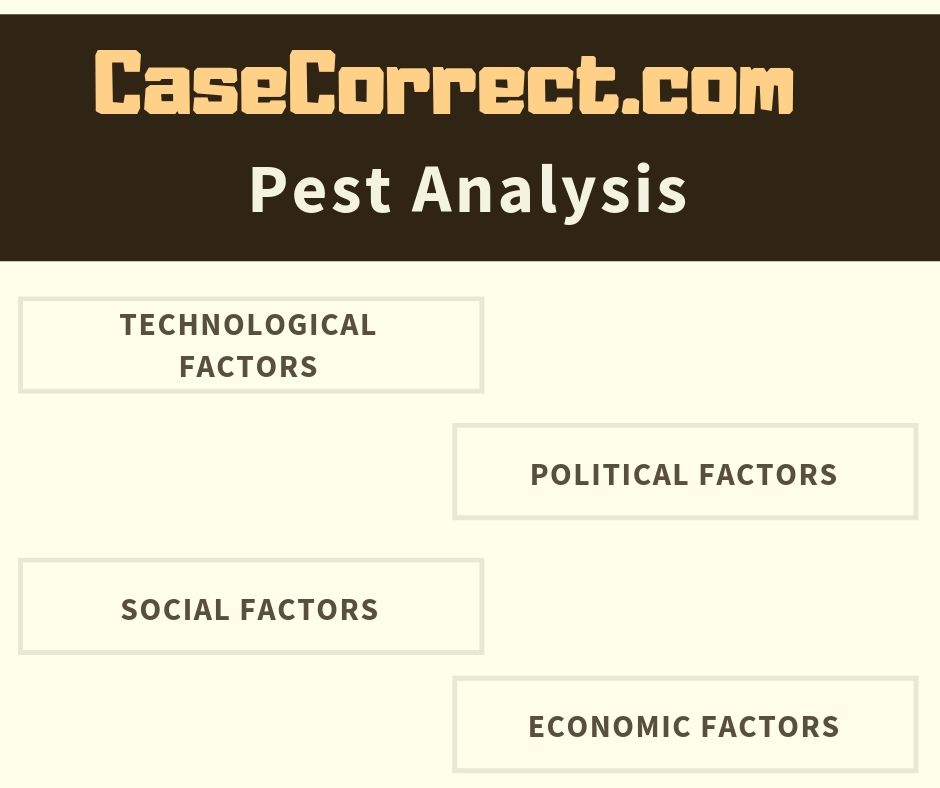How To Manage Risk After Risk Management Has Failed Case Analysis
Introduction:
 In 1969, the facility of How To Manage Risk After Risk Management Has Failed Case Study Solution for offering its member physicians with the convenience of administrative and medical structure. In the properties of United States of America, How To Manage Risk After Risk Management Has Failed Case Study Solution was one of the most reputed organization. It was associated with Cape Cod Eye surgical treatment and How To Manage Risk After Risk Management Has Failed offering different vertically integrated services in order to satisfy the requirements of clients. The base operation of How To Manage Risk After Risk Management Has Failed Case Study Help is localized in downtown Boston. About 160,000 clients were supplied services each year with around 7500 surgical treatments and 4500 laser procedures.
In 1969, the facility of How To Manage Risk After Risk Management Has Failed Case Study Solution for offering its member physicians with the convenience of administrative and medical structure. In the properties of United States of America, How To Manage Risk After Risk Management Has Failed Case Study Solution was one of the most reputed organization. It was associated with Cape Cod Eye surgical treatment and How To Manage Risk After Risk Management Has Failed offering different vertically integrated services in order to satisfy the requirements of clients. The base operation of How To Manage Risk After Risk Management Has Failed Case Study Help is localized in downtown Boston. About 160,000 clients were supplied services each year with around 7500 surgical treatments and 4500 laser procedures.
Through the aggregation of a series of central functions, How To Manage Risk After Risk Management Has Failed Case Study Solution had actually considerably accomplished the economies of sales enabling the ophthalmologists to supply them with sufficient time to concentrate on their clients and their individual lives. The business structure was its real strength that allowed individuals for directing and creating of practices in their appropriate way. Because 1990, the development of How To Manage Risk After Risk Management Has Failed Case Study Help had been steady but the health care environment patterns had actually known to wear down the financial returns of How To Manage Risk After Risk Management Has Failed Case Study Help from half of the 1980's incomes to 40 percent in 1990 and 30 percent in 2000.
Problem statement:
 Due to the modifications in the guidelines to operate in the How To Manage Risk After Risk Management Has Failed Case Study Analysis industry, it was needed by the organizations to increase the volume of patients, decrease in costs of treatments and treatments in order to balance out minimized margins. Annual decrease in the costs had actually produced issue for physicians in earning an excellent income.
Due to the modifications in the guidelines to operate in the How To Manage Risk After Risk Management Has Failed Case Study Analysis industry, it was needed by the organizations to increase the volume of patients, decrease in costs of treatments and treatments in order to balance out minimized margins. Annual decrease in the costs had actually produced issue for physicians in earning an excellent income.
Situational Analysis:
SWOT Analysis:
Strength:
• How To Manage Risk After Risk Management Has Failed Case Study Solution is understood to have a distinguished position in the How To Manage Risk After Risk Management Has Failed Case Study Analysis industry of United States of America.
• Due to its existence in the United States, it has strong client base line as an approximate of160,000 visits of patients each year.
• Management of How To Manage Risk After Risk Management Has Failed Case Study Analysis including its doctors spend more time to activities in teaching, research and advancement for creative item development.
• The employee had a collaborative relationship in talking about and management of any particular operation headed by a team leader.
Weakness:
 • Problems in maintenance of scheduling system and main scheduling center of How To Manage Risk After Risk Management Has Failed Case Study Solution pace due to the modification in the procedures followed by Shingleton's team.
• Problems in maintenance of scheduling system and main scheduling center of How To Manage Risk After Risk Management Has Failed Case Study Solution pace due to the modification in the procedures followed by Shingleton's team.
• Financial returns of the organization had actually been decreasing annual with increase in the development of How To Manage Risk After Risk Management Has Failed Case Study Analysis industry in United States of America by 5 percent.
• Increased volume of clients' visits required use of increased capacity that minimized the capability of the group the absorption of the circulation of modifications.
• Greater clients' volume led the team of severe tension threatening the mission of the practice and the rate of income growth.
Opportunities:
• Development of the consumer base line in the low-end market will provide them with direct contact with their customers to supply them with high quality services.
• Local players tend to be essential players in the growth of any leading company, healthy relationship with relative regional players can supply substantial result in the value chain of the business operation.
• As there has actually been reimbursement by the government, limiting brand-new entrants entry in the How To Manage Risk After Risk Management Has Failed Case Study Help market in the United States providing an advantage to all leading companies in the How To Manage Risk After Risk Management Has Failed Case Study Help market.
• Production of low-end items, as high-end products are costly and can not be budget friendly for bad people receiving medication for their specific medical condition.
Threats:
• Development in the use of innovation versus the defense of ecological issues tend to grow the criticism by the groups of environmental management.
• With pace to be the leading organization in the globe, efforts are being made by every organization confusing the consumers and growing issue about their health awareness.
• Mismanagement of the scheduling process of the company might lead to loss of clients due to the bad services of the team and stress and grumbled physicians.
PEST Analysis:
Political:
 The notable element of the How To Manage Risk After Risk Management Has Failed Case Study Solution market where How To Manage Risk After Risk Management Has Failed Case Study Help operates has stability in regards to politics. At present, the rate of How To Manage Risk After Risk Management Has Failed Case Study Help industry had actually known to be increasing at about 34 million with the growing market rate of about 5 percent. How To Manage Risk After Risk Management Has Failed Case Study Solution operating in the How To Manage Risk After Risk Management Has Failed Case Study Analysis market in United States of America has actually been understood to experience political pressure mesmerizing for decrease in the costs of the items. This is due to the advances in technology and medical sciences. Therefore, the effect of political element on How To Manage Risk After Risk Management Has Failed Case Study Solution is thought about as moderate.
The notable element of the How To Manage Risk After Risk Management Has Failed Case Study Solution market where How To Manage Risk After Risk Management Has Failed Case Study Help operates has stability in regards to politics. At present, the rate of How To Manage Risk After Risk Management Has Failed Case Study Help industry had actually known to be increasing at about 34 million with the growing market rate of about 5 percent. How To Manage Risk After Risk Management Has Failed Case Study Solution operating in the How To Manage Risk After Risk Management Has Failed Case Study Analysis market in United States of America has actually been understood to experience political pressure mesmerizing for decrease in the costs of the items. This is due to the advances in technology and medical sciences. Therefore, the effect of political element on How To Manage Risk After Risk Management Has Failed Case Study Solution is thought about as moderate.
Economical:
How To Manage Risk After Risk Management Has Failed Case Study Analysis needs adhering to think about laws of consumers, laws of work and laws of health and security in the location where it functions. Furthermore, there is a requirement of adhering to included regulations developed in the target consumer market. Regardless of, the benefit of laws and policies to well established organization like How To Manage Risk After Risk Management Has Failed Case Study Analysis given that they provide help in reducing the entry of industry and increasing the confidence of customer with drugs.
Social:
Mostly in American and european states, majority of the population is aging increasing the need of drug usage. This is expected to remain very same or even increase with regard to time in forthcoming duration. With boost in the check outs of the patients in How To Manage Risk After Risk Management Has Failed Case Study Help has actually likewise served as an aspect in increasing the need of drugs.
Technological:
Improvements through the use of biotechnological approaches and methods has assisted in continuous development for research study and advancement with contribution of the organization's own physician investing their time in the technological enhanced devices in the How To Manage Risk After Risk Management Has Failed Case Study Analysis industry. The research study and advancement needs heavy investment, but it substantially assists in the quality of drugs throughout its advancement.
Alternatives:
Incorporation of managerial and HR expertise:
 Due to the mismanagement and increased volume of clients visits affecting the efficiency of doctors and to handle the reason behind their stress. HR practices in the management of operations of the company play an essential role.
Due to the mismanagement and increased volume of clients visits affecting the efficiency of doctors and to handle the reason behind their stress. HR practices in the management of operations of the company play an essential role.
Pros:
• They have the charge of recruitment providing training of leadership, management of group work, support in scheduling, and a methodical process of working with.
• They operate in lead in the development management, management of performance, succession planning, paths of career and some other aspects in the management of talent.
• In advancement of efficient relationships at work for productivity and contribution, they provide support by knowing the crucial gamers.
Knowledgeable in regards to policies, rules and policies involving payment that depends upon the region, state or city.
Cons:
• Governmental bodies are primarily worried for financing with the macro-economic problems rather micro-level focusing on the modern-day practices of HR concentrating on the efficiency and motivation of labor force.
• Development of ability of HR needs financial investment in development and training of both HR experts line expert with the obligations of staff management.
Investment in improving the capacity of professional personnel evaluates in a variety of methods order to deliver the function of HR management. Even, after the rejection of outsourcing, the internal function of requirements to be monitored and examined effectively.
Reduction in direct personnel cost:
Due to the fact that of the need but out of sheer requirement which may carry out decrease in cost, the technique is to be focused within the organization which is primarily due not. Reduction in expense is generally for improvement of efficiency and the portion of earnings development.
Pros:
• Cost decrease baseline is understood to increase the margins of profit which the in-demand advantage. The company can carry out cost decrease process based on their need to increase the revenue margin.
• Boost in the efficiency through decrease in expense by disconcerting staff members about its entrance in the phase of micro-management.
Enhancement while doing so standards because the effects of improvising processes is on the current process nature improving the standards of product development.
Cons:
• Although, the process of expense reduction is a positive one in the development and development of the organization as a long-lasting technique, however false cutting of the expense might create a panic alarm throughout the organization.
• Changing in the processes followed can in some cases be harmful rather enhancing rate of earnings development depending upon the participation of internal and external stakeholders.
• Concentrating on the decrease of expense may result in compromise on the quality of product affecting the objective and vision of the organization and threatening the worth of the brand.
Development of a new organizational structure:
Modification in the structure of the company is to manage the changes in company operations and run it from a status quo to the preferred state in the future. It aims to bring tactical changes in the company for a customer company to ensure that the corporation operates typically throughout the change.
Pros:
 • Organizations that considers external consultant for application in changing the structure of the organization has the advantage of external influence.
• Organizations that considers external consultant for application in changing the structure of the organization has the advantage of external influence.
• Modification in the structure of company forces the management of company to keep track of the modification execution to guarantee that the procedures required remain in location and quote that there are no barriers preventing successful execution of the modification. The most effective modification in the structure of company forces will collect the intelligence of company in order to much better understand the method the company runs.
Changes in the structure of company control the modification speed and the way it alters to be performed. It assist the organization in adopting changes effectively. It likewise ensures that the adaptation of the modification in the structure of organization is going on its ideal pace and the adjustment of procedure must be continued.
Cons:
• Change in the structure of company is not performed directly in a normal way through leader serving as the leading main members of the organizational management. It can be in some way tough for bringing change in the structure of the organizational force in order to get organization broad buy-in.
• While the group accountable for altering the structure of the company assists the company to change with the carried out changes, modifications in the organizational structure seldom has the ability of empowerment and to provide ownership of the changes to the workers in the company.
• Modifications in the structure of company, is to re-organize the entire structure of the company on how it runs. It offers with certainty to run the company in a smooth way however it need to not be implemented throughout seriousness.
